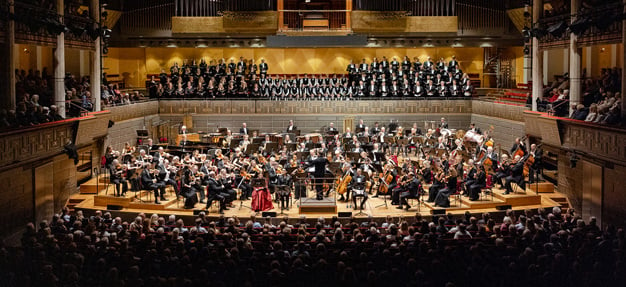

Royal Stockholm Philharmonic Orchestra
With over 100 concerts a year and creative programming, it’s an orchestra constantly evolving. The Royal Stockholm Philharmonic Orchestra has probably never been better.
The Royal Stockholm Philharmonic Orchestra is today among the most active streaming players worldwide. With its digital platform Konserthuset Play, the orchestra offers a comprehensive library of filmed performances which are available for free streaming anywhere in the world.
In the following sections, you can read more about the orchestra's history since 1902 – its historic chief conductors, guests and tours – and get acquainted with the members of the orchestra of today.
Concerts with the Royal Stockholm Philharmonic Orchestra
-
Genre: Royal Stockholm Philharmonic Orchestra
Philharmonic celebration of an organ
Poulenc’s famous organ concerto resounds in the City Hall.
Sunday 17 August 2025 16.00 -
Genre: Royal Stockholm Philharmonic Orchestra, Vocal music
Movies, Memories and Broadway
A tribute to Barbra Streisand, featuring Lisa Nilsson and Tommy Körberg.
Thursday 4 September 2025 19.00Sold out -
Genre: Royal Stockholm Philharmonic Orchestra, Vocal music
Movies, Memories and Broadway
A tribute to Barbra Streisand, featuring Lisa Nilsson and Tommy Körberg.
Friday 5 September 2025 19.00Sold out
